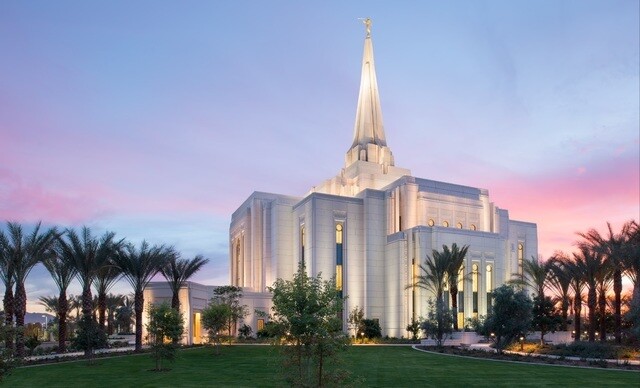“Temple patterns are as old as human life on earth. Actually, the plan for temples was established even before the foundation of the world,” President Russell M. Nelson says. Throughout his service in the Church, President Nelson has provided profound insight into the temple, its symbolism, and what it means to each of us. Here are some of those insights, excerpted from the book Teachings of Russell M. Nelson.
Scripture and Topics to Enhance Your Temple Attendance
Each temple is a house of learning. There we are taught in the Master’s way. His way differs from modes of others. His way is ancient and rich with symbolism. We can learn much by pondering the reality for which each symbol stands. Teachings of the temple are beautifully simple and simply beautiful. They are understood by the humble, yet they can excite the intellect of the brightest minds.
Spiritual preparation is enhanced by study. I like to recommend that members going to the temple for the first time read short explanatory paragraphs in the Bible Dictionary, listed under seven topics: “Anoint,” “Atonement,” “Christ,” “Covenant,” “Fall of Adam and Eve,” “Sacrifices,” and “Temple.” Doing so will provide a firm foundation.
One may also read in the Old Testament and the books of Moses and Abraham in the Pearl of Great Price. Such a review of ancient scripture is even more enlightening after one is familiar with the temple endowment. Those books underscore the antiquity of temple work (“Personal Preparation for Temple Blessings,” Ensign, May 2001).
Symbolism of Temple Features and Gestures

In the temples, symbols are utilized to teach us spiritual things. For example, we admire that beautiful chandelier in the celestial room. … Look at the many innumerable pieces in that chandelier, each one made beautiful as it reflects the light behind it. Can you see that each piece in that chandelier could represent some of the lineage of Abraham, Isaac, and Jacob illuminated by the light of the Lord?
Elsewhere in the temple, we admire the altars. They become more important to us when they symbolize the importance of prayer. The sculptured carpets on the floor signify the sure foundation of truth, below which we do not descend, as devoted Latter-day Saints. …
The whiteness of temple clothing suggests purity, and the similarity of our dress symbolizes the fact that we are all sons and daughters of God. In the temple, there is no segregation according to position held, color, wealth, or the lack of it.
In this temple, there is a symbolic pathway of progression. The baptismal font is located in the lowest part of the temple, symbolizing the fact that Jesus was baptized in the lowest body of fresh water on planet earth. There He descended below all things to rise above all things. In Solomon’s temple, the baptismal font was supported by twelve oxen that symbolized the twelve tribes of Israel. … From the baptismal font of the temple, we progress upward through the telestial and terrestrial realms to the room that represents the celestial home of God (“Symbols and the Temple,” St. Louis Missouri Temple Dedication, session eighteen, June 5, 1997).
In the temple, we learn something of the unique pattern by which the Lord teaches His children. Here we make sacred covenants; in turn, the Lord emphasizes the importance of those covenants by giving us special signs and tokens. This pattern … is equally evident in many scriptural examples. Coupling a covenant with a sign or a token is an instructional model often employed by the Master Teacher.
Recognition of a pattern among creators is expected. They all have their individual styles. A person familiar with the music of Beethoven, for example, can easily recognize his pattern of composition. One acquainted with the art of Van Gogh can readily identify his style of painting. So it is with this instructional model of the Lord.
In the temple, He uses covenants, signs, and tokens. The same pattern is evident in holy writ (“Teachings, Covenants, and Signs,” Salt Lake Temple Devotional, October 11, 1998).
▶ Read more profound insights from our prophet in Teachings of Russell M. Nelson.
The Significance of Temple Garments and Clothing
Wearing the temple garment has deep symbolic significance. It represents a continuing commitment. Just as the Savior exemplified the need to endure to the end, we wear the garment faithfully as part of the enduring armor of God. Thus we demonstrate our faith in Him and in His eternal covenants with us (“Personal Preparation for Temple Blessings,” Ensign, May 2001).
If you would really like to know more about the antiquity of temple clothing, find it out for yourself in the Old Testament. The Old Testament is replete with references to special clothing of the temple. In the last book of the New Testament, you will find reference again to temple clothing: “What are these which are arrayed in white robes? … and serve him day and night in his temple” (Revelation 7:13, 15). Temple clothing is unique, and it is special. It lets us carry the temple and its meaning with us in our daily lives (“Why Temples?” Mount Timpanogos Utah Temple Dedication, session eleven, October 15, 1996).
Sealing Ordinances Are Supreme

Though many ordinances of the gospel have been restored—blessing, baptism, confirmation, ordination, and endowment—the sealing ordinances are supreme. The temple is not just a place of beauty. It is the place where sealing ordinances are performed. The ordinance of sealing is an absolute.
The design of a temple is functional. Every element in the architecture and atmosphere of the temple contributes to its function, which is to teach and to bless. The temple teaches of Christ. The endowment comprises a course of instruction relating to the eternal journey of a man and woman from their premortal existence through the earthly experience and on to the exaltation that each may attain. The temple blesses with ordinances and instructions of the Lord. It blesses with the ultimate linkage in God’s plan of happiness to unite families forever. Other truths about the temple are well known to you:
- The ordinances and righteousness complement one another, yet neither will exalt alone.
- The antiquity and modernity of temple activity blend and bridge the gulf of time. Even the newest temples closely relate to ancient times.
The importance of temple work is underlined by events of the Restoration of the Lord’s Church upon the earth. The first recorded revelation pertained to the doctrine to seal living individuals to their families and progenitors. We know it, of course, as section 2 [of the Doctrine and Covenants], given September 21, 1823. Unless such sealing ordinances were performed, the revelation states, “the whole earth would be utterly wasted” (Doctrine and Covenants 2:3), (“Your Commission and Charge,” Temple Presidents Seminar, August 16, 1995.)
▶ Read more profound insights from our prophet in Teachings of Russell M. Nelson.
Internationally renowned as a surgeon, teacher, and man of great faith, President Russell M. Nelson has dedicated his life to healing hearts and ministering throughout his medical career and his Church service. This definitive volume of his teachings presents excerpts from his speeches and writings spanning more than three decades as an Apostle of the Lord, including many from his recent world tour and other unpublished addresses. Alphabetically arranged by topic, these teachings on more than 100 subjects provide a perfect, easy-to-use resource for talks, lessons, and more.
A Gift and Exaltation in the Highest Heaven
In the temple we receive an endowment, which is, literally speaking, a gift. In receiving this gift, we should understand its significance and the importance of keeping sacred covenants. Each temple ordinance “is not just a ritual to go through, it is an act of solemn promising” (Teachings of Gordon B. Hinckley [1997], 638).
The temple endowment was given by revelation. Thus, it is best understood by revelation, prayerfully sought with a sincere heart. . . .
In preparing to receive the endowment and other ordinances of the temple, we should understand the sealing authority of the priesthood. Jesus referred to this authority long ago when He taught His Apostles, “Whatsoever thou shalt bind on earth shall be bound in heaven” (Matthew 16:19). That same authority has been restored in these latter days. Just as priesthood is eternal—without beginning or end—so is the effect of priesthood ordinances that bind families together forever.
Temple ordinances, covenants, endowments, and sealings enable individuals to be reconciled with the Lord and families to be sealed beyond the veil of death. Obedience to temple covenants qualifies us for eternal life, the greatest gift of God to man. Eternal life is more than immortality. Eternal life is exaltation in the highest heaven—the kind of life that God lives (“Personal Preparation for Temple Blessings,” Ensign, May 2001).
Everything in the Church Points to the Temple

There will be some in each congregation who have been or are now the victims of horrible abuse, or who may have suffered the devastating betrayal and infidelity of a spouse, or who labor with a wayward child. These good, faithful people need the truth that is in the temple, the house of the Lord.
The temple is literally full of truth. Truths of the Father’s plan are laid open to us with clarity and power. Words of truth about our Father, His Son, and Their relationship to us are spoken in the covenants and ordinances of the temple. The temple is a house of revelation where truth distills upon our souls and enlightens our understanding (see Doctrine and Covenants 109:15). We learn of our eternal identity and purpose and the marvelous promises of the Lord. Those promises are true, for our God is a God of truth and cannot lie (see Ether 3:12). … If our brothers and sisters go to the temple seeking strength and understanding, they will be taught by the Lord Himself about truths that matter most to them in their time of need (“Divine Law—Absolute Truth,” General Conference Leadership Meeting, September 27, 2017).
At the root of every temple ordinance and covenant—at the heart of the plan of salvation—is the Atonement of Jesus Christ. Every activity, lesson, and advancement in the Church points to the Lord and His temple. Efforts to proclaim the gospel, perfect the Saints, and redeem the dead all lead to the temple. Each temple stands as a symbol of our membership in the Church, as a sign of our faith in life after death, and as a sacred step toward eternal glory for us and our families (“Personal Preparation for Blessings of the Temple,” Accra Ghana Temple Dedication, session two, January 11, 2004).
▶ Read more profound insights from our prophet in Teachings of Russell M. Nelson.


